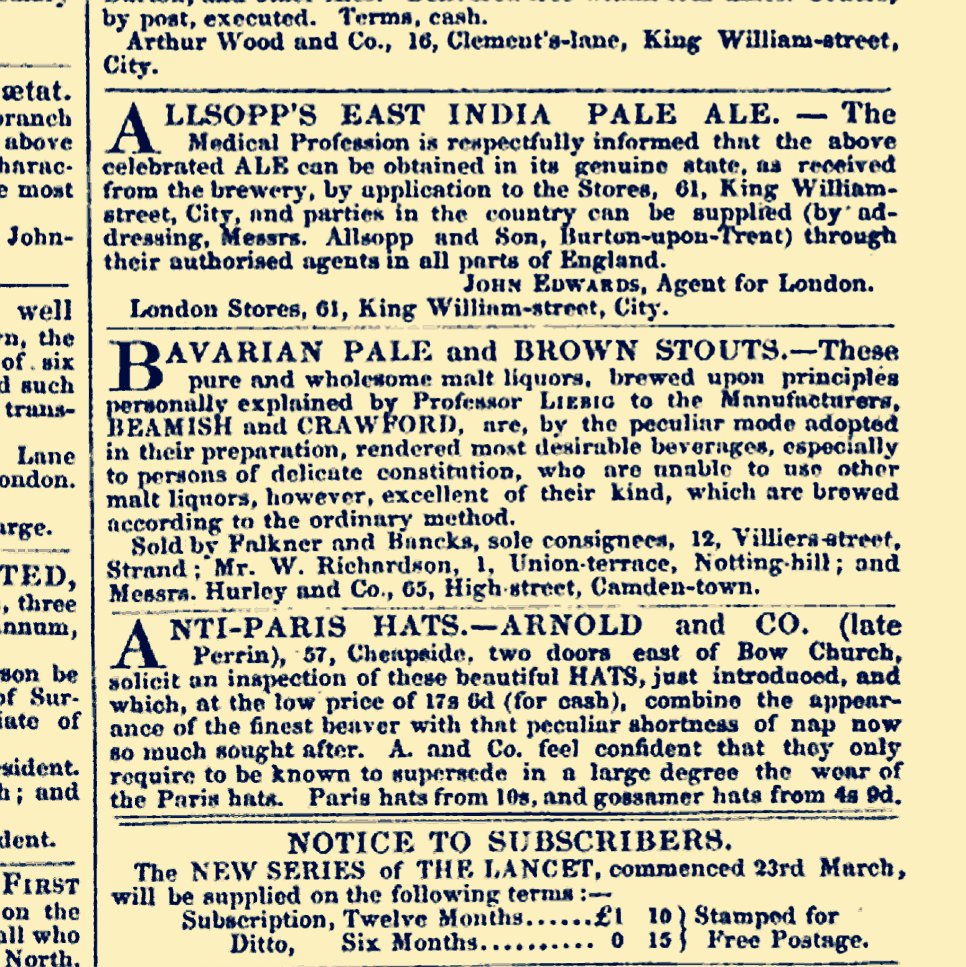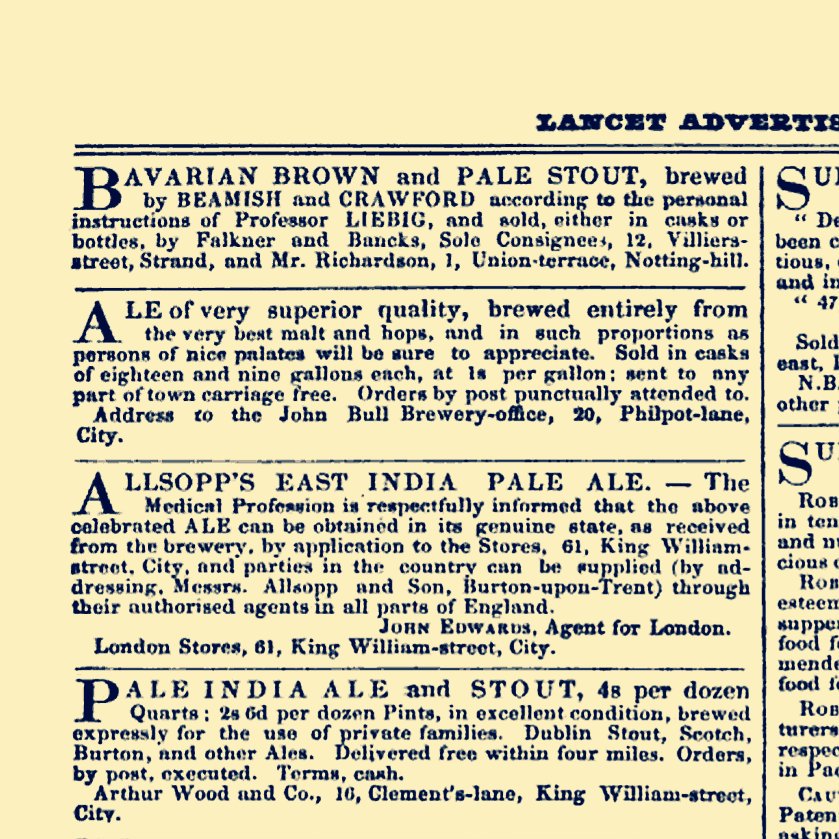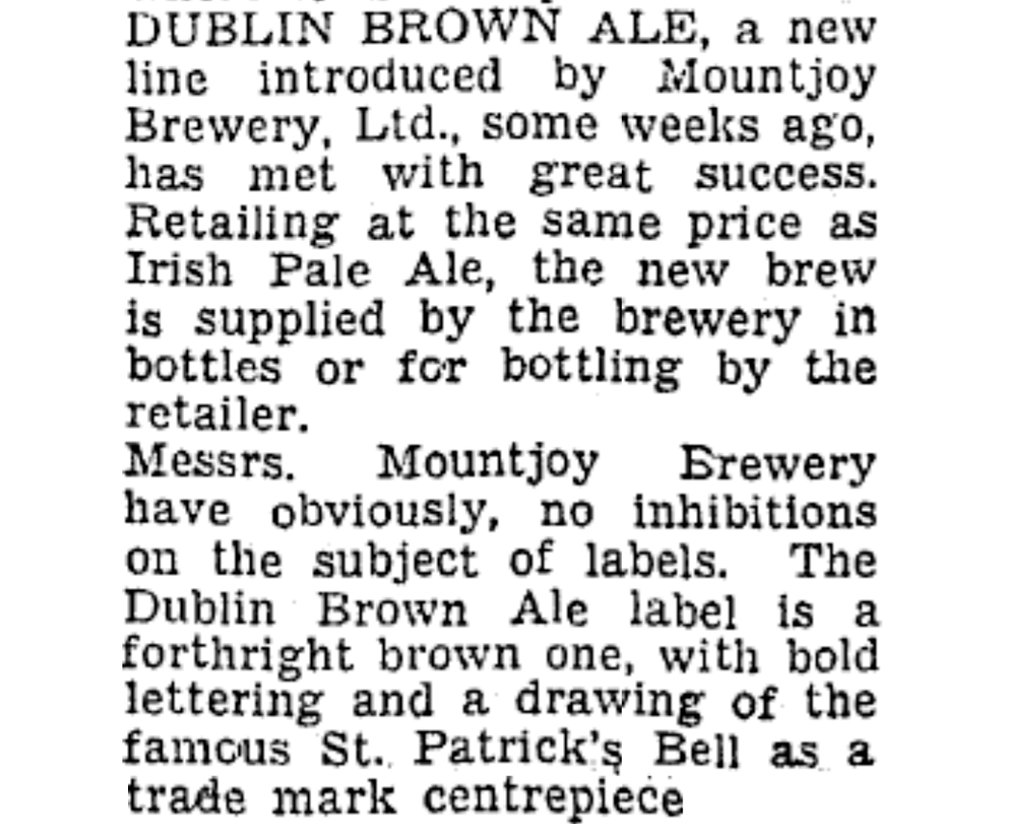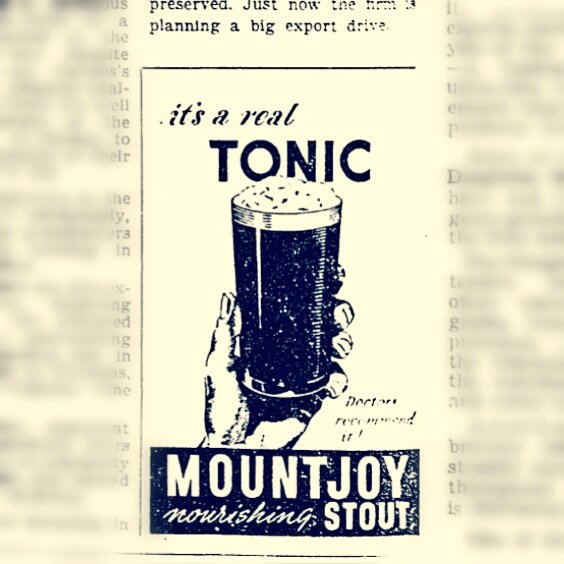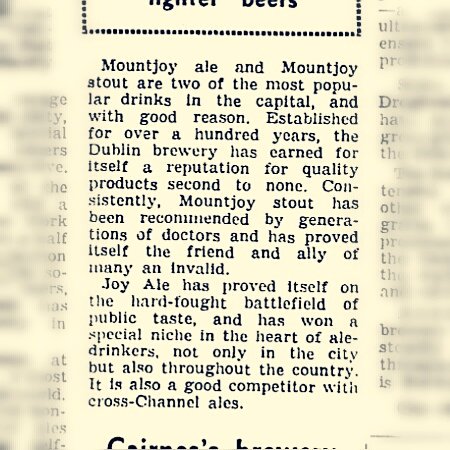In 1883 Cork city held its second industrial exhibition, having held its first in 1852 just one year after the Great Exhibition in the Crystal Palace in London. Amongst the usual arts, machinery and other assorted produce was a selection of ales and porters from some of the breweries operating in Cork - and one in Waterford.
Here we have:
Beamish and Crawford showing their East India Pale Ale, Pale Bitter Ale, Extra Stout, Double Stout and Single Stout.
Lane & Co. had their Draught Porter in cask and West India Stout in cask and bottles.
Allman, Dowden & Co. with an ale and a stout.
Arnott & Co had an Extra Stout, a Stout and a Pale Ale in cask and bottle and a Mild Ale in cask.
Keily & Sons from Waterford - the only non-Cork brewers - had an India Pale Ale brewed with malt from Perry's in Rathdowney and an XXX Ale and XXX Stout made with their own malt.
All of this is interesting enough and once again shows that Irish breweries were attempting styles other than just porters, as I highlighted in my
last post, but hardly too exciting...
But I've also come across both the awards handed out and also some interesting, if somewhat vague in some cases, tasting notes from a separate report published three years after the exhibition....
As can be seen, Arnott's, Beamish & Crawford's and Lane's breweries all won medals.
Beamish & Crawford's single stout has the 'characteristic thin rough flavour required of a quick consumption stout.' An interesting choice of words, as both thin and rough would often be used as negatives nowadays - not a profile of an award winning stout! Their bottled double stout was also described as clean but missing the 'pungency' required for a such a beer, again a word that is usually seen as negative
Lane & Co. won just a commendation but no medal for their export stout (presumably the West India Stout mentioned above), which seems to have been highly hopped and has 'kept well', but with some preservatives added ... perhaps? Their Stout, which wasn't listed above, is low hopped and the comments seem to give the impression that it could have been better ... that it 'should have been presented' fresher. The porter gets the best review, being a 'Good pleasant porter, full, sweet and clean.'
Although John Arnott's brewery also won two medals for its pale ale, there appears to have been some disagreement in the judges camp, as one of the jurors pointed out that both ales were so over 'Burtonized' to put them 'outside the category of genuine ales.' This was pointed out by William Sullivan, president of Queen's College in Cork, although Mr. C. O'Sullivan was a consulting chemist for Bass, in Burton-on-Trent. I'm not sure if names were mixed up or the analysis came to Cork's Mr. Sullivan via the Burton one, either way it seems that one Cork brewery may have been trying too hard to emulate Bass & Co.!
Anyhow, these are some of the earliest comments I have come across on the taste of Irish beers in any sort of judging setting, and they make interesting reading ... as does the rest of the report with comments on whiskey, cooperage, cider and other related issues that might lead some down a similar rabbithole to my own...
Liam
